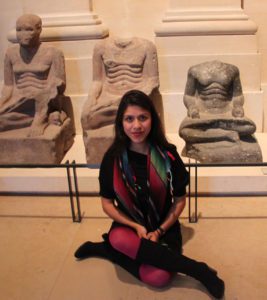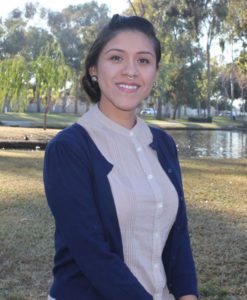Gordi. Flaca. Chula. Fea. Vieja. Linda. Fatty. Skinny. Sexy. Ugly. Old lady. Cute. Whether positive or negative association, I grew up hearing terms that were quick to remind us that we were defined by our appearance.
These were terms of endearment. I grew up believing that describing others based on their outer appearances was not only normal, but expected. And though I occasionally encountered someone who interpreted these descriptors as malicious, I usually dismissed those responses as excessive sensitivity, especially since my initial descriptions were most often welcomed. Not until much later did I realize that this was not the way I wanted to relate to others, nor how I wanted others to relate to me.
Partially, I recognize that this experience as a woman, and woman of color, it is inescapable to be described and critiqued in a physical context. Mexican, native, fiery Latina, curvy, tribal, dark skinned, too sexy, too loud, too weird, too bossy, too opinionated, too intense; these were descriptions I came to know all too well. When I think about the future generations, I never want them to hear or feel that they’re too much of anything. We need all of their intensity and passion and skills. So how do we come to welcome all of their existence in a world that asks us to be small?
When I think of growth, I am reminded of the old tenant, “the personal is political.”, and remember that we always start with ourselves. We start by exploring our relationship to ourselves; by living in our awareness intentionally. Yoga is filled with beautiful practices to explore mind, body and their intersections. Though in recent history, the term “yoga” has come to be known almost exclusively as the postures, there are other practices, such as meditation and breathwork, that can help us deepen our connection to ourselves.
Prochaska and DiClemente developed the Stages of Change transtheoretical model in 1983, and it remains a core teaching of psychology and recovery programs. Following Precontemplation, comes Contemplation, which is such a powerful step in exploring our motivation for change. Yoga and other forms of meditation, journaling, dance are all examples of contemplative practices. Within the context of personal development, we can examine if our external judgements of others a representation of the narrative we carry about ourselves. Practicing mindful meditation can help train us to notice our thoughts enough to discover the themes of our internal narrative. Is it critical or encouraging? Is it filled with compassion or condemnation? As with all forms of yoga, remember, this is a practice to give you a sense of agency over your thoughts. Meditation is the work of change, and change is difficult.
Within the context of exploring our relationship with our bodies, I love using Breathwork, or Pranayama practice. Breathwork and breath retraining has long been used to support mental wellness and has gained popularity for addressing stress, anxiety and depression (1, 2). Although breathing is an involuntary process, struggles with posture and stress can lead to improper breathing and lead to increased cortisol release, the hormone our body produces to cope with stress (4).

Breathwork practice can be destabilizing, so it’s important to explore these techniques with a trained or experienced practitioner. My experience with breathwork has been one of bringing awareness to my felt experience I have frequently worked to avoid as someone who recovered from an eating disorder and someone living with chronic pain. Practicing breathwork allows me space to embody my experience and encourages me to let go of the idea to simply “tolerate” discomfort. In breathwork practice, it may be helpful to explore our relationships with physical and emotional pain. Where do our thoughts go when we experience discomfort? Is that a time our mind goes to judgement, criticism, or blame? How does our experience of discomfort change when we approach it with compassion?
Contemplating our inner experience allows space for us to become better allies, better equipped to hold space for the experience of others. Recognizing that we are impacted by situations outside of our control may be easier to do within the context of ourselves than others, according to the Attribution Theory (2). Meditation and practicing awareness of our thoughts allows us the necessary interruption to see that we are all reacting and responding with the skills available to us today.
Coming to a place of acceptance of our body, all of our body, all of our thoughts, all of our worries, and anxieties and joys and anger and pain, is a tool in taking back our power, our autonomy, our agency. This is not a small endeavor, but it is worth it. Next time your mind wanders down the path of judgement or criticism, take a few diaphragmatic breaths when you notice. This negative or critical voice developed over time, in effort to keep you safe, to help you fit in, to protect you from examining potentially painful or complex issues. Now, as an adult, allow yourself to consider that criticism isn’t typically an effective way to interact with ourselves or the world, even when the effort feels to be coming from a place of concern. Embrace compassion as an experiment and examine how your relationships with yourself and others change.
By Celisa Flores

Celisa Flores: Since obtaining a Master’s degree in Counseling in 2007 at CSU Fresno and a PsyD in Clinical Psychology from The Chicago School of Professional Psychology in 2013, Dr. Flores worked as a therapist and program director in a wide variety of mental health treatment setting. This diversity of experience allowed research and training to expand her skills as a Feminist therapist with emphasis on Eating Disorders, Mindfulness and women’s issues. With a history of providing individual, group, family, and couples counseling services, as well as therapeutic yoga services, Dr. Flores has focused on evidence-based practices, providing guidance and support in Mindfulness in Recovery, Dialectical Behavioral Therapy (DBT), and other self-empowerment strategies. In addition to training as a therapist, she is a Certified Yoga Teacher, also trained in Mindful Stress Reduction, Reiki and as a doula. By integrating a variety of holistic tools into recovery and wellness, she works to create a long-lasting, sustainable wellness plan. Now proudly with Center for Discovery, providing clinical outreach for Orange County and the Central California region. This role has included national and international training and speaking engagements on eating disorders, mindfulness, yoga, body acceptance, and professional wellness, as well as facilitating accessible, body-affirming yoga annually at the Los Angeles NEDA walk. With a passion to support other therapists and community members with understanding eating disorders and treatment as well as self-care and overall wellness, she is always working to share information, research and training.
NOTE: This post is part of a collaborative media series organized and curated by Omstars and the Yoga & Body Image Coalition intended as a deep dive into yoga & body image
(1) Brown, R. P., & Gerbarg, P. L. (2005). Sudarshan kriya yogic breathing in the treatment of stress, anxiety, and depression: Part II – clinical applications and guidelines. The Journal of Alternative and Complementary Medicine, 11(4), 711-717
(2) O’Donohue, W.T. and Fisher, J.E. (Eds.). (2008). Cognitive Behavior Therapy: Applying Empirically Supported Techniques in your Practice (2nd ed.). Hoboken, NJ, US: John Wiley & Sons Inc.
(3) Ross, L. (1977). The Intuitive Psychologist And His Shortcomings: Distortions in the Attribution Process. In Advances in experimental social psychology (Vol. 10, pp. 173-220). Academic Press.
(4) Thibodeux, W. (Feb 8, 2018). Science Says You’ve Been Breathing Wrong. Here’s how to do it right. Inc.com.










